East Timor: The blues in the sky and the sea
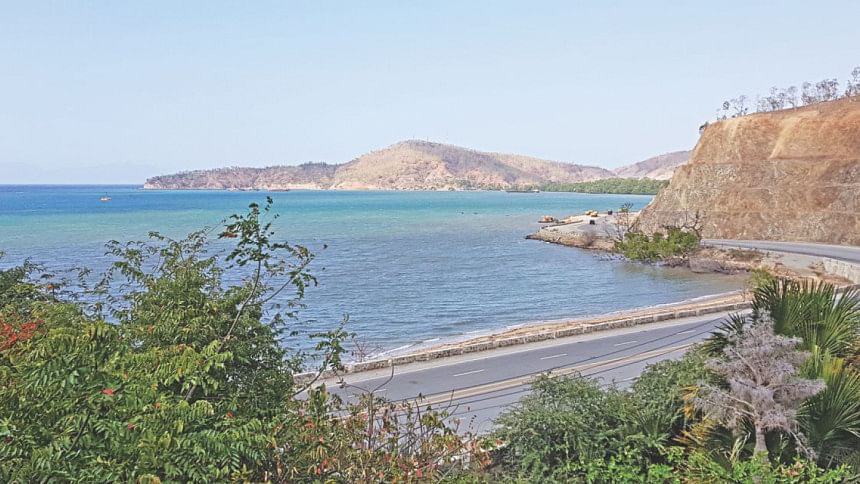
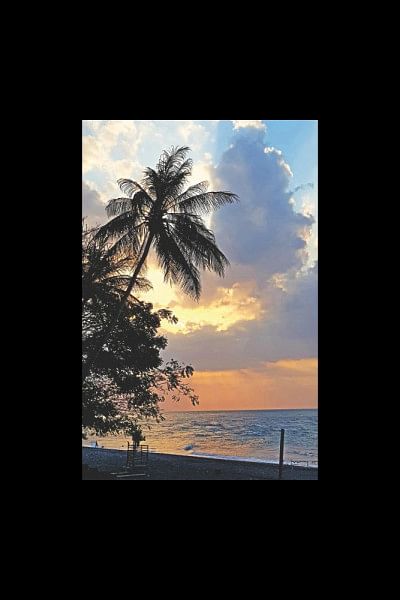
Five of us friends were sat on a suspended balcony over a sizable mountain, with the Timor Sea underneath; an unobstructed view of the sea meeting the horizon and the nearby mountains, with a road snaking through.
What beauty!
As if life halted in front of beauty of this proportion. We talked, sang, chatted, took pictures, ate, and recited poetry… we felt like free birds, like the poet says, mora bondhon-heen, jonmo-Time flew while we chatted away there, somewhat far away from the city, until we realised the sun was already low in the west, and we had to leave immediately if we wanted to see the sun set over the sea. Meanwhile, we had not even noticed if this restaurant called 'cha-bar' had any other patrons, or that we were all past 50.
We forgot all sorrows and issues. Actually the sea and the mountains create such an ambience that people forget their regrets, large and small, as nature rejuvenates them.
What a wonderland
With that intent of rejuvenating ourselves, we in a group of four friends, suddenly ended up in a country which is yet unspoilt, not developed or modern or favoured by tourists. Something you could call 'virgin beauty,' surrounded by mountains and the sea. When our airplane was descending for the landing strip surrounded by three-coloured sea water, and the mountains, for a minute it felt as if we were landing into the sea itself. But no, that was just a baseless thought, as we arrived at the airport in safely at the Presidente Nicolau Lobato International Airport at Dili, the capital city of the tiny island country known as East Timor.
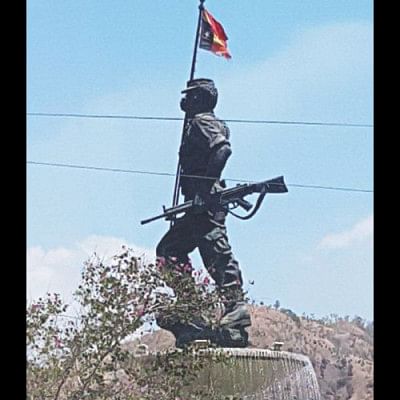
First love
My friend Sharmin and I came upon a pristine new city upon exiting the airport, a war torn country just finding its footing, and slowly building the webs of development. Nature's beauty abounds — wide roads with bright flowers growing on the two sides, and rows of mountains in view. The buildings and houses were simple, with some influenced with the Portuguese style.
A statue of the valiant freedom fighters of East Timor welcomes visitors to the city, firmly standing on an island at the city's entryway, and the sea begins right after, deep blue in its reflection of the clear skies above, and many large and small boats gently rocking on the waves. Just thinking that this is where we would spend the next few days was an immediate feel-good factor.
The crocodile totem
We noticed a very clear presence of the crocodile totem upon arriving in the city of Dili, with photos of various sizes on prominent display. Suddenly, I realised even the map of East Timor looks like a crocodile!
The culture of East Timor shows influences of Portuguese, Roman Catholic, Indonesian and Austrasian elements.
Legend has it that once upon a time, an old crocodile fell very sick, and was helped by a certain young man. Later, the crocodile took the form of the island of Timor to help pay off the young man's debts, and the man then started to live on the island, and hence the crocodile shape of the island. The Timorese are supposed to be his descendants, and at least the last three indigenous tribes still live on the island. Evidence points to human inhabitation of the island as far back as 42,000 years.
Knowing East TimorThe Timorese are very unassuming, simple and peace-loving, although they are not that well off monetarily. The most surprising thing is that the American Dollar is well accepted here, with the 10-dollar bill being the most common. The island's population is 96.9 percent Roman Catholic. The rest 3 percent are followers of other faiths. There are 15 languages spoken on the island, but Tetum is the official language, and Portuguese is also quite commonly spoken and taught at schools. About 30 percent can speak English. There are also American and Australian schools, and the National University of East Timor. Although there are some 21 healthcare institutes, the quality of health services is not that good, and the worst bit is the high number of smokers here. Football is a favoured sport, and motorbikes are popular. Violence against women is low, but many children are malnourished. |
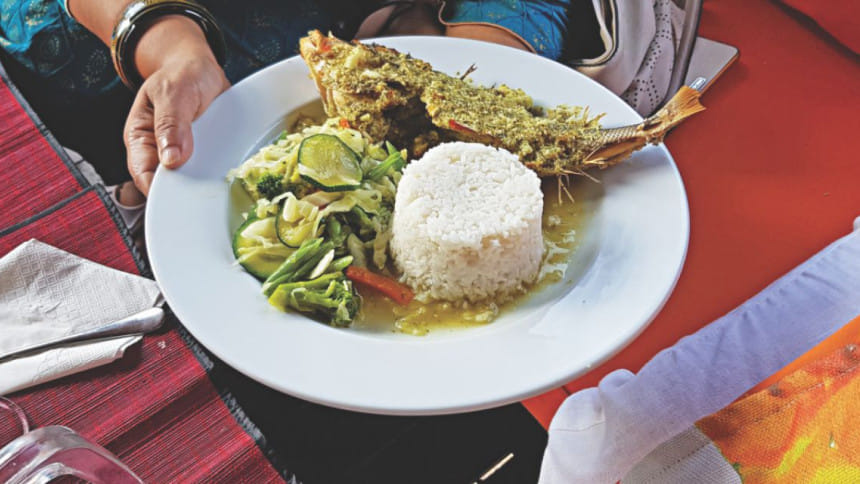
Portuguese Fort
From 'cha-bar', we set off to see the Portuguese Fort, situated just outside the Mawbara village. It belonged to the Dutch initially, and was later captured by the Portuguese in 1851. The cannons of this fort by the sea point towards the open waters, to aim at any approaching enemies. As tourists frequent the fort, local women also sell handicrafts in stalls right outside, with most items made of bamboo, cane, straw and yarn. I also saw some large pillows on sale.
Dolphin and whale watching
The next day we set off to see dolphins and whales in the open waters of the Timor Sea. Sharmin had already got us tickets for the same. I am properly scared of the water, but seeing the excitement of the faces of my friends, I mimicked their smiles as well. But that programme was thwarted by the unfortunate tsunami that hit Indonesia right then.
This time, I mimicked my friend's expression of disappointment. The season for whale and dolphin sighting remains open from September to January, and the area also offers opportunity for scuba diving.
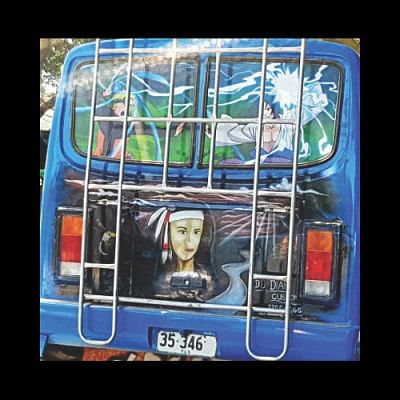
A bit of history
East Timor was a Portuguese colony since the 16th century, and as such, it was known as Portuguese Timor till 1975. On 28 November of the same year, Fretilin declared independence and the Revolutionary Front went all out for an independent East Timor. Just nine days later, Indonesia occupied the area declaring it as the country's 27th province, and only left after the United Nations entered the fray.
Consequently, it became an independent country in 2002, and the UN Peacekeepers finally left in 2012. East Timor was a neglected commercial centre. Coffee and sandalwood were the main exports, neglectfully and oppressively ruled by the Portuguese.
Civil war began in 1974 after the colonisers left, and much of the fracas started after the discovery of oil under the sea bed surrounding the island. Along with petroleum, exports now include cardamom, cinnamon, and cocoa.
The sunset
There are innumerable sea beaches in Timor, we bid adieu to the sun on a different one every day, with amazing views of the nature's colour palette in a resplendent display of the sea water — shades of blue, turquoise, sometimes white, and even greys. But the sudden change in the water's colour became noticeable just when the sun would dip towards the west, as it turned golden. The beach came alive with people hanging out, children playing, and vendors selling fried fish as street food, but without any chaos or pollution.
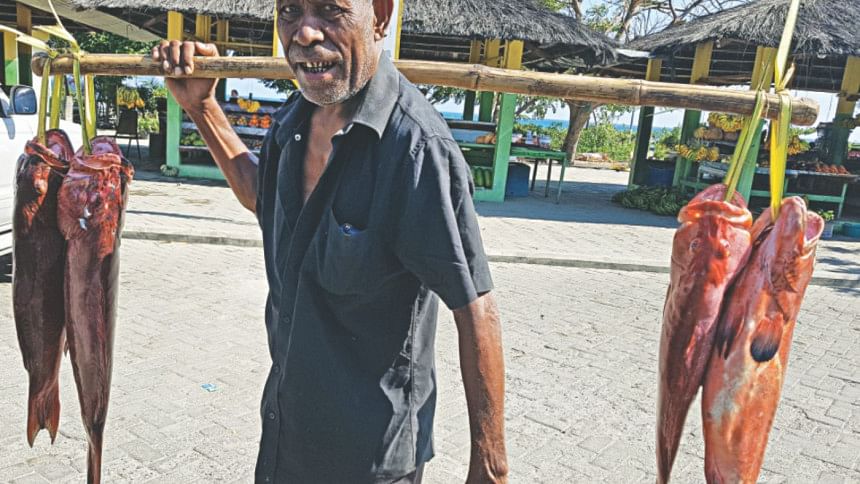
Jesus atop the mountain
Visible from Dili is Cristo Rei, a 44-foot statue of Jesus located atop a globe and overlooking the capital city. The Indonesian government built it, and Suharto inaugurated in 1996.
Upon reaching the Fatucama peninsula, we learnt that the way to Jesus's feet was over a thousand stairs. We resigned, and went to the beach again. As the daylight faded, the sky around Cristo Rei turned shades of red, and the entire area came alive with lights as darkness fell. The ambience of the lights, and the sound of the ocean make me feel as if listening to Jesus spreading a message of peace.
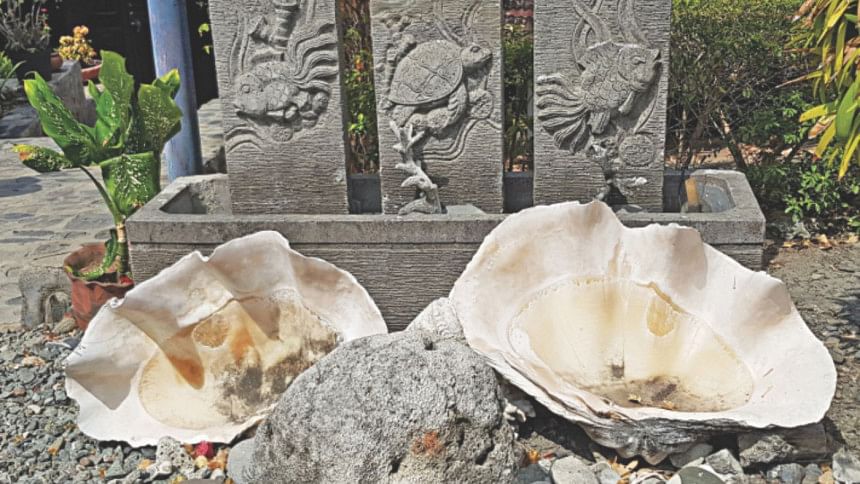
Cuisine
The street food scene comes alive as evening fall, with vendors offering fish chops and kebabs, freshly fried fish, Calamari fry, roasted corn on the cob, and myriad fried stuff. Many fish are found in Timor, and the island nation has bountiful juicy fruits as well, including papaya, watermelon, banana, dragon-fruit, pineapple, and melons. Vendors sell coconut, both ripe and green, on every other street corner. Their staple is sticky rice and water spinach (kolmi shaak), locally known as kankun. Other than that, mint leaves, tamarind, corn, various vegetables and fruits are all commonly eaten.
There are places that serve Thai, Timorese, Philippine, Indonesian and Chinese cuisine on the beaches. There are also places which serve just fish of different kinds, quite delicious, and most of the shops are in buildings of wood, cane or bamboo. Bangladeshis own many large businesses in Timor, including furniture and electronics.
Pope John Paul II and Uma Luliks
Our days of wandering about were gradually coming to an end, and the time for return nearing. So we went off to see the statue of Pope John Paul II's statue, by the winding road over a mountain where his likeness stands with a long cross-topped sceptre in his hand. On the way, we also visited the indigenous holy house called Uma Luliks in Tetum, which can be frequently seen along with the other architecture influenced by the Portuguese.
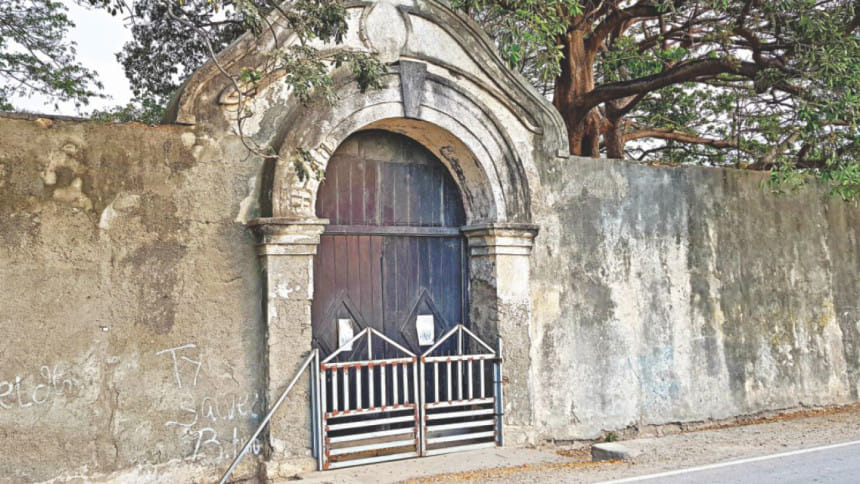
Famous Timorese coffee
As we started off in the early morning, breakfast was had at a local Timorese coffee shop. Our group had developed a fondness for the brilliant aroma and taste of Timorese coffee over the past few days. We had never imagined coffee could have so many varieties.
Tais Market
Our next stop was Tais Market, a hub for purely local wares including handwoven wraps, bangles, wares made of bamboo and cane, bags, masks, traditional crowns, crocodile and the like. Most sellers were female.
Bidding adieu
After few blissful days, lots of random wandering and with a basket of sweet memories we came back with our hearts singing anew.
Translated by Sania Aiman
Photo: Shahana Huda

 For all latest news, follow The Daily Star's Google News channel.
For all latest news, follow The Daily Star's Google News channel. 



Comments